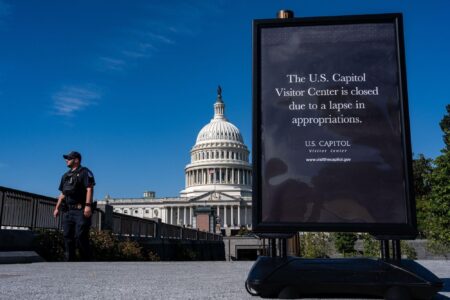Unraveling the Rise of Horror Cinema: A New Era of Fear
Over the past decade, horror films have witnessed an extraordinary surge in both popularity and cultural significance, capturing the attention of diverse audiences worldwide. This renaissance is fueled by a fusion of inventive narratives that intertwine classic fears with contemporary societal concerns, the quest for immersive viewing experiences, and the widespread availability of streaming platforms. Today, horror not only commands box office success but also thrives on digital services, proving that expertly crafted fear can rival any genre in audience engagement.
Primary catalysts behind this phenomenon include:
- Expanded storytelling horizons: Incorporation of multicultural myths and underrepresented voices enriches the genreŌĆÖs depth.
- Technological innovation: Advanced visual effects and immersive soundscapes intensify the sensory impact.
- Interactive fan communities: Social media platforms foster collective excitement and shared experiences.
| Year | Average Box Office Revenue per Horror Film | Number of Horror Film Releases |
|---|---|---|
| 2018 | $32 Million | 45 |
| 2022 | $48 Million | 62 |
| 2024 (Forecast) | $55 Million | 70 |
Psychological and Cultural Dimensions of Contemporary Horror
Horror films have transcended their traditional boundaries, embedding themselves deeply into mainstream culture and influencing societal dialogues about fear, identity, and collective anxieties. The genreŌĆÖs revival is largely attributed to its capacity to mirror modern-day fearsŌĆöranging from pervasive digital surveillance to the alienation wrought by social fragmentationŌĆöwhile delivering intense emotional experiences. Scholars argue that horrorŌĆÖs popularity signals a societal mechanism for confronting uncertainty, offering viewers a controlled environment to process discomfort and dread.
Moreover, the genre has evolved to include socially conscious narratives that address pressing issues such as racial injustice, gender dynamics, and systemic inequalities, blending entertainment with meaningful commentary.
From a psychological standpoint, horrorŌĆÖs allure is complex and paradoxical. It provides an adrenaline-fueled escape from daily pressures, allowing audiences to safely engage with fear and anxiety, which can foster emotional resilience. Key psychological appeals include:
- Collective viewing experiences: Sharing scares enhances social bonds and communal catharsis.
- Exploration of forbidden themes: Horror offers a platform to safely examine societal taboos and suppressed fears.
- Mental engagement: The challenge of unraveling mysteries and anticipating twists stimulates cognitive involvement.
| Psychological Effect | Impact on Viewers |
|---|---|
| Adrenaline Surge | Increased alertness and excitement |
| Controlled Exposure to Fear | Safe confrontation of anxieties |
| Social Cohesion | Strengthened interpersonal connections |
| Emotional Release | Stress alleviation and resilience enhancement |
Market Dynamics Driving Horror Films to Box Office Dominance
Recent industry analyses reveal a marked shift in consumer preferences, with horror consistently outperforming many other genres in theatrical revenue. This trend is underpinned by several evolving factors. Notably, the genreŌĆÖs relatively modest production budgets empower studios to experiment creatively while maintaining lucrative profit margins. Additionally, streaming services have accelerated horrorŌĆÖs reach by curating exclusive content that cultivates loyal fan communities. The shared experience of horrorŌĆöwhether in cinemas or through virtual watch partiesŌĆöalso encourages repeat viewings and social interaction.
Key observations from box office data include:
- Predominance of younger audiences: Millennials and Gen Z drive demand for innovative and diverse horror stories.
- Global appeal: International horror films are breaking cultural barriers and achieving worldwide success.
- Creative marketing strategies: Viral campaigns and immersive promotions generate buzz and anticipation.
| Year | Highest-Grossing Horror Film | Domestic Box Office | Production Cost |
|---|---|---|---|
| 2021 | A Quiet Place Part II | $160 Million | $60 Million |
| 2022 | The Black Phone | $100 Million | $20 Million |
| 2023 | M3GAN | $150 Million | $12 Million |
Navigating Innovation Versus Sensationalism in Horror Filmmaking
In an increasingly crowded horror landscape, filmmakers face the challenge of balancing originality with the temptation to rely on shock tactics. While groundbreaking storytelling and fresh thematic explorations are essential to captivate audiences, an excessive dependence on predictable jump scares and graphic imagery risks undermining the genreŌĆÖs artistic value. Long-term audience engagement hinges on creatorsŌĆÖ ability to blend suspenseful narratives with profound emotional resonance that endures beyond the immediate fright.
Successful horror productions demonstrate that pushing creative boundaries can coincide with commercial viability. Current audience preferences highlight several critical elements:
- Gradual tension escalation rather than overt gore
- Innovative soundscapes and minimalist visual effects
- Integration of relevant social and cultural themes
- Complex character arcs that ground the horror experience
| Element | Focus on Innovation | Risk of Sensationalism |
|---|---|---|
| Storytelling | Unique plots with layered meanings | Overused tropes and shock-driven twists |
| Visual Presentation | Artful cinematography and mood lighting | Excessive gore and jump scares |
| Audience Retention | Suspenseful engagement | Brief, superficial thrills |
Conclusion: Reflecting on HorrorŌĆÖs Mainstream Ascendancy
As horror films continue to dominate both theaters and streaming platforms, their escalating popularity invites deeper reflection on the cultural and psychological ramifications of this trend. While these movies provide exhilarating escapism, the intensifying themes and darker narratives call for mindful consumption and awareness of the underlying societal anxieties they mirror. Ultimately, the genreŌĆÖs rise to mainstream prominence serves as both a reflection of collective fears and a cautionary signal about the emotional landscapes audiences navigate today.





